AARP Hearing Center

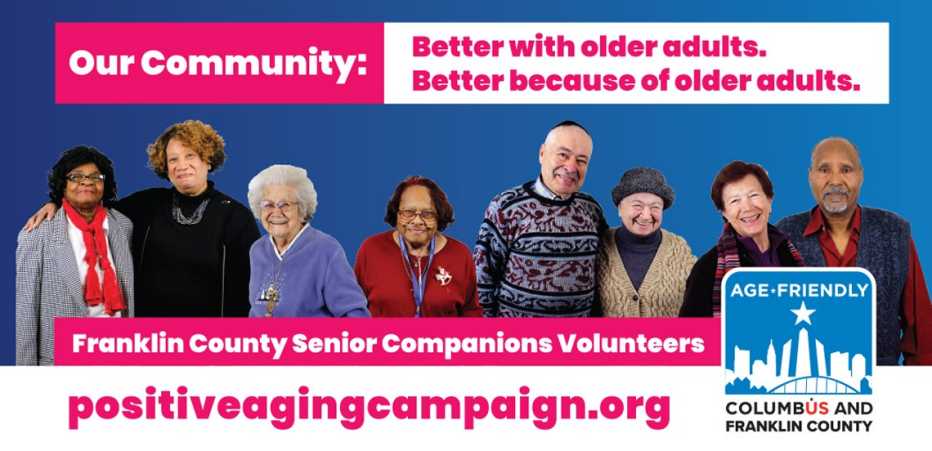
ACTIVITIES AS OF MARCH 2022
Member Profile
The state capital city of Columbus, Ohio, located in Franklin County, is home to some 905,750 residents, 10 percent of whom are age 65 or older. Franklin County’s population of people age 60-plus is expected to double by 2050.
Initiative Name: Age-Friendly Columbus and Franklin County
Network Member Since: 2015 for Columbus, expanded in 2018 to include all of Franklin County
Government Type: For Columbus, elected officeholders consist of a mayor, city auditor, city attorney and seven city council members. The Franklin County elected leadership consists of a seven-member Board of Commissioners.

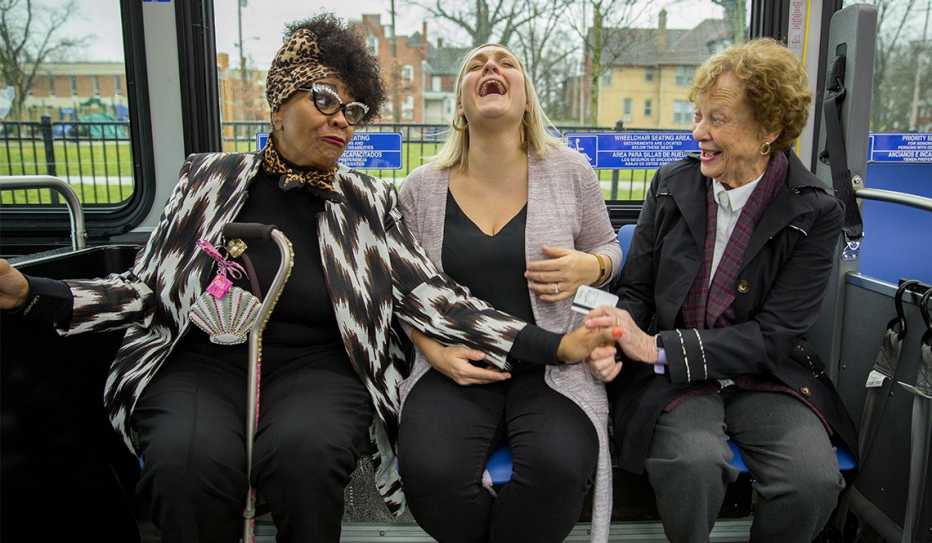
Local Age-Friendly Leadership: Age-Friendly Columbus and Franklin County is led by Katie White (director), Marisa Sheldon (assistant director) and Holly Dabelko-Schoeny, Ph.D. (research director) of the Age-Friendly Innovation Center at The Ohio State University College of Social Work. Read more about the center below.
Reason(s) for Joining: Conversations about enrolling Columbus in the AARP Network of Age-Friendly States and Communities began in 2015. At that time, White was running a Columbus-based community program affiliated with Village Connections, a nonprofit that helps older adults live independently in their homes.
“I went to the Village Connections national conference and heard Gail Kohn from Age-Friendly Washington, D.C., speaking about age-friendly communities and I thought it was a really great match,” White explains, noting that two reports had just been released about population growth and aging in Central Ohio.
From there, aging leaders including the Central Ohio Area Agency on Aging, the Franklin County Office on Aging, advocates, government agencies and local foundations began meeting. These foundational partners became the core group that launched and ultimately funded the effort.
The Financials: Age-Friendly Columbus and Franklin County relies solely on grants from foundations, government entities and other organizations.
Getting Started: Age-Friendly Columbus and Franklin County developed its Age-Friendly Action Plan in 2017 and its Five-Year Progress Report in 2021.

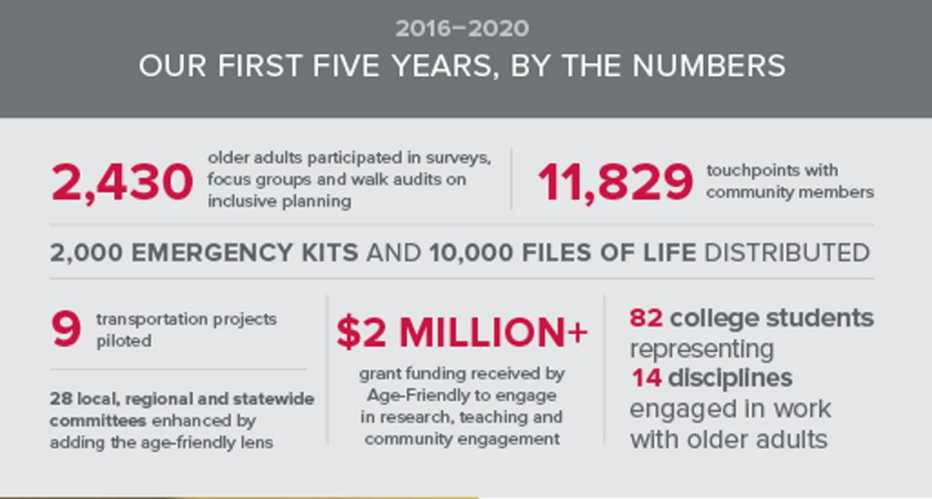
Actions and Achievements
Among Age-Friendly Columbus and Franklin County's anti-ageism initiatives:
Change AGEnts
Every January, Age-Friendly Columbus and Franklin Country hosts Change AGEnts, a class in which middle school students learn about the aging process and the international age-friendly communities movement. Local older adults are invited to participate in the lessons by talking about their experiences with ageism. The students then work together to address a challenge the older adults discussed.
Nearly three-dozen Change AGEnts classes have been held since 2018, resulting in approximately 600 student engagements with older adults.
“We can combat ageism by making connections to older people and being respectful,” said one student, adding, “I think my favorite part was all the stories the older people shared with us.”
Age-Friendly Innovation Center
In 2021, Age-Friendly Columbus and Franklin County opened the Age-Friendly Innovation Center near the Columbus campus of The Ohio State University’s College of Social Work.
"It is billed as the first university-based center in the nation to embrace the full spectrum of needs, opportunities and complex issues related to age-friendly communities,” says Dabelko-Schoeny, who is an associate professor in addition to being the center's director of research. "The center aims to innovate with older adults through research, education and engagement. It positions the College of Social Work to add to the age-friendly program’s accomplishments through a formal academic center."
Adds White: “The innovation center is pushing us into unchartered territory, where we can say, ‘Here's another possibility of what can be done after you're done with your first five years.’”
Positive Aging Campaign
Launched in 2020, the Positive Aging Campaign (#PositiveAging) features the faces, voices and stories of older Franklin County residents on commercials, billboards and other advertisements in Central Ohio. The campaign showcases older adults representing a diverse array of populations — including people of different races, sexual orientations, abilities, faiths and neighborhoods — who share their positive thoughts on aging. The Positive Aging Campaign includes a "Button Up Ageism" activity in which people create slogans and design promotional buttons

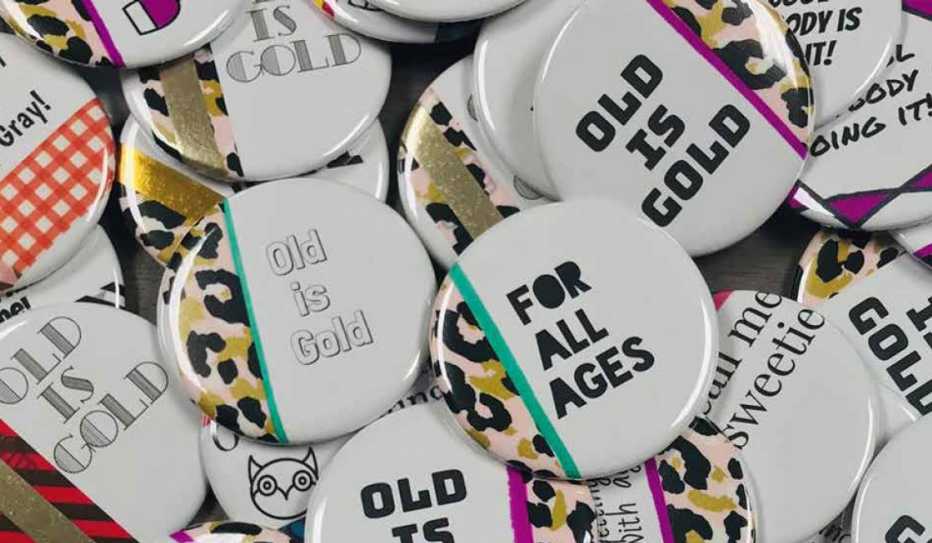

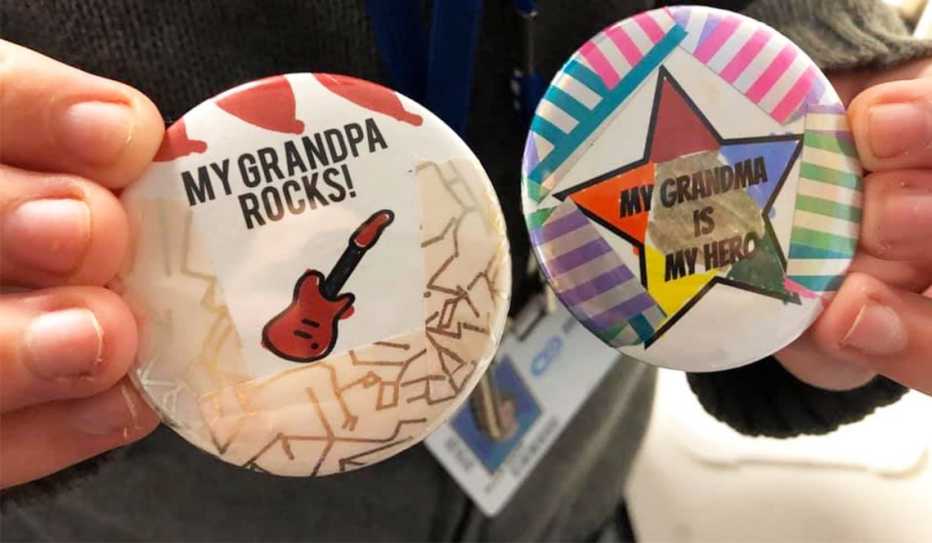
Age-Friendly Innovation Scholars
A Trip to the Big Apple
In 2017, a contingent of 18 local leaders from Columbus and Franklin County traveled to New York City for a meeting with the city’s age-friendly leaders.
“We spent time in an ‘age-friendly neighborhood,’ looking at benches and crosswalks and going into stores that had committed to being age-friendly,” says White, who coordinated the trip with her counterpart in Age-Friendly NYC. “The trip provided a little glimpse into our potential future. Once the group heard from older New Yorkers and saw the community features and really ‘got it,’ they went home ready to advocate for funding.”
At the time, the Age-Friendly Columbus and Franklin County had funds for only the two-year assessment and planning phases of the work. Funding for the three-year implementation phase was still needed.
“That trip was the turning point,” White explains. After the excursion, “five departments contributed the needed funds.”
One of the challenges encountered in combatting ageism, notes White, is that fewer and fewer young people are studying gerontology and many know very little about the aging process or careers in aging. Because of that, the Age-Friendly Innovation Center created the Age-Friendly Innovation Scholars program, which brings together Ohio State students from several disciplines to learn about aging and ageism.
Marisa Sheldon, the innovation center's assistant director, created and manages the scholars program curriculum, which centers on learning about the aging network in Central Ohio as well as the age-friendly model on a local and national scale. “The goal is to inspire the next generation of leaders through the structured curriculum we built,” she explains.
“These students might have a small interest in aging, but aren't ultimately going on to study gerontology,” says White. “But with Marisa’s leadership in education and mentoring students, they’ll leave with the ability to add the aging lens to whatever they’re studying. They’ll be taking that knowledge with them wherever they go in their careers.”
Recent scholars have focused on the challenges older residents face with mobility and transportation. The students visited with advocacy organizations and service providers and attended city council sessions. The students regularly met to discuss, from the perspective of their respective fields of study, what they learned.
After completing the four-month program, an urban planning student shared that “connecting with all of these different people focused on the same issue from different disciplines has changed my perspective on what I can bring back to my own practice.”
A student who plans to become an occupational therapist said, “I’m really hoping that through my experiences I’m able to inspire other people to step up and help older adults in their community. It doesn’t take a lot of extra effort. It’s just being there for people when they need it.”
Lessons Learned (and Advice for Others)
Katie White offers up the following recommendations:
Be Inclusive
“Make sure that older adults and people with disabilities are by your side as equal partners and contributors. Include them in every single aspect of this work — from designing your surveys to participating in focus groups to putting together policies to attending city council meetings.
“Some of the same older adults that were with us in the very beginning are now our best ambassadors and are out in the community. When we have an event they're out there saying, ‘This is worth your time. This is important. Your voice is really being heard and your voice really matters.’"
Know When to Step Back
"We are really good at pulling together the partners for funding and the data to say, ‘We need to pilot a program now and here's what it needs to look like.’ And then once it gets going, we work together to make it sustainable.
"Not every project needs to go on forever. But if it needs to be sustainable, we work on that and then we sort of fade into the background. It doesn't really make sense for us as an age-friendly community to be running ongoing programs, whereas it does make sense for us to identify data-provided evidence to pull in the funding, evaluate it and then step out and let the real experts run the programs."
Reach Out Beyond the 'Aging World'
"In the beginning, you have to be willing to take all the meetings, attend advocacy events, serve on committees and be present for as much as possible. This is needed in order to start carving out the age-friendly space in conversations outside of the typical aging world.
"It really makes a difference when, if possible, you have a paid, dedicated staff member for this work. When we started, we had all the momentum and support behind us in aging, which is what we needed to launch it. And then we put the Age-Friendly Columbus program into our regional planning organization. By having an organization outside of aging, we were able to launch that aging lens across transportation, housing, planning and all of those types of conversations."
Join the AARP Network of Age-Friendly States and Communities
"Joining age-friendly has hands down been the shift in our community toward thinking and talking about aging in places that it had never occurred before. Just having your community thinking and talking about aging is a huge success.
"We have communities from all over that email our team members asking, 'How did you do this and why should we enter the network?' Aside from all of the incredible materials and research that's available through AARP, it just is important to be part of the official network so we can continue to push this forward and have collective impact.
"In Ohio, we started something called the Coalition of Age-Friendly Communities of Ohio (or CAFCO). We meet on a quarterly basis, we mentor and share information. That cross-state collaboration is well supported by the AARP network, which provides the information, the background, but also the backbone and connections to other communities.
"We all need to be listening and working together and learning from each other. If we learned something in Columbus and Franklin County, and it's working, we want to share that out as quickly as we can so others might be able to utilize it as well. And when other communities are having success, we need to learn from them, too."
Ask Questions — and Listen to the Answers
"We had a whole year or two when we were concentrating really heavily on transportation and mobility, particularly with Safe Routes to Age in Place.
"We learned through the survey and our focus groups that not many older people were taking the bus. We held more focus groups with immigrants and refugees in seven different languages: What would help increase the number of people who take our local bus?
"We came up with a robust list of strategies, including to figure out an easier way to update the bus stops and for older adults to get their discounted bus passes. The bus system was already rolling out an easier way to buy bus passes but we could not figure out who and how to get funding for the bus stop improvements.
"Finally, after multiple submissions, we received a grant that will start in 2022. So in 2022 and 2023, we'll be using our data to know where dense populations of older adults live. We'll actually go with older adults to look at the bus stops they use and ask, 'What improvements do you want?' We’ll use the funding from the grant and make the improvements through a partnership with our local transit authority.
"It took three years, multiple grant submissions and tons of work and time to show and prove why this is important. We finally are getting it done. Along the way we built these great partnerships, like with our transit authority. There's frustration, there are meetings that are uncomfortable and awkward or you're accidentally making somebody mad by trying to push forward your aging agenda. But when you are based in community engagement and don’t give up, eventually it all falls into place. We finally are getting it done, after all these years, and it’s because of persistence and partnerships. The whole network is still sort of in its infancy and we need to make sure that it keeps going so we can all learn from each other about experiences like this."
Team Up
"Once the funding came together in late 2017, Age-Friendly Columbus was ready to begin its implementation phase. At the same time, Franklin County’s commissioners passed legislation to expand age-friendly countywide.
"The first shared task involved deciding where to house the implementation phase. The Ohio State University College of Social Work was the natural choice, due to its dedication to excellence in research, service, community well-being, and social and economic justice for vulnerable populations.
"The team chose as its office a location near a recreation center just outside of downtown Columbus. It’s a bustling spot that allowed us to lead grassroots advocacy efforts. Partnering with a university, if at all possible, is a really smart option to explore. Research and student partners have been invaluable to our growth and success.
"Once we moved into the university, we were able to grow our relationships within and beyond the College of Social Work. We took time to find faculty members whose research and approaches align with the age-friendly approach, such as staff, faculty and students in the School of Public Health. As long as the program goals and approach align, you can really enhance one another’s work.
"Organizing and running focus groups for gathering community input are another benefit of teaming up with an academic institution. I knew how to do focus groups, but a university has a lot more techniques and analysis, and that made the findings more valid and scientific."
Related Links
- Read "Age-Friendly Columbus/Franklin County, Ohio, and Equity"
- Read "Age-Friendly Columbus/Franklin County, Ohio, Responds to COVID"
- Visit AARP Ohio
- Learn about the AARP Network of Age-Friendly States and Communities
- Check out the network's Member List
- Find more Age-Friendly Member Impact and Achievement Profiles
Reporting by Amy Lennard Goehner




























































